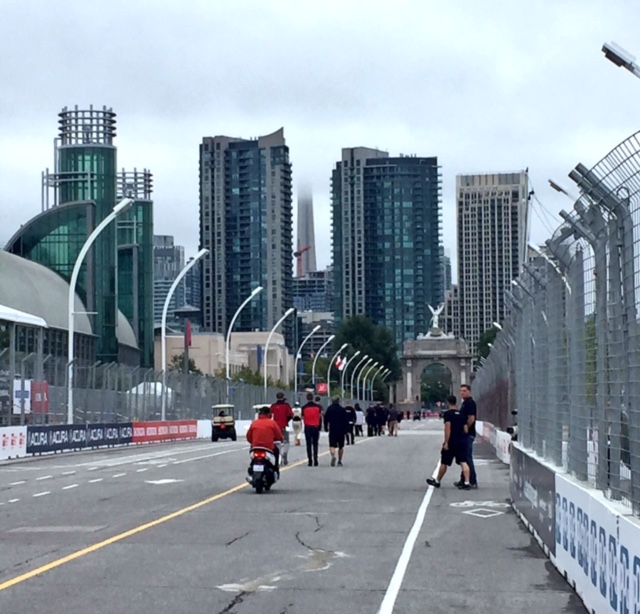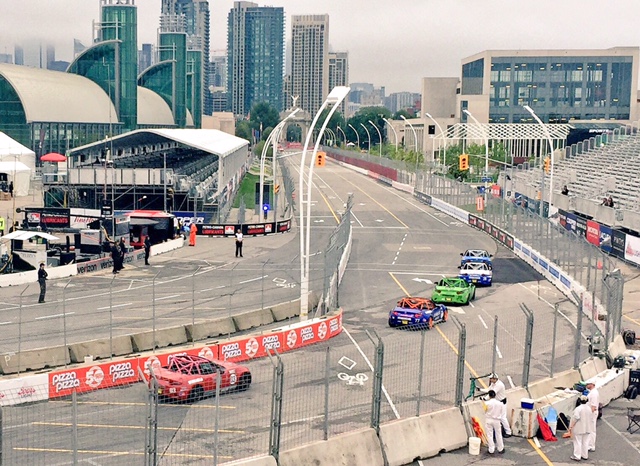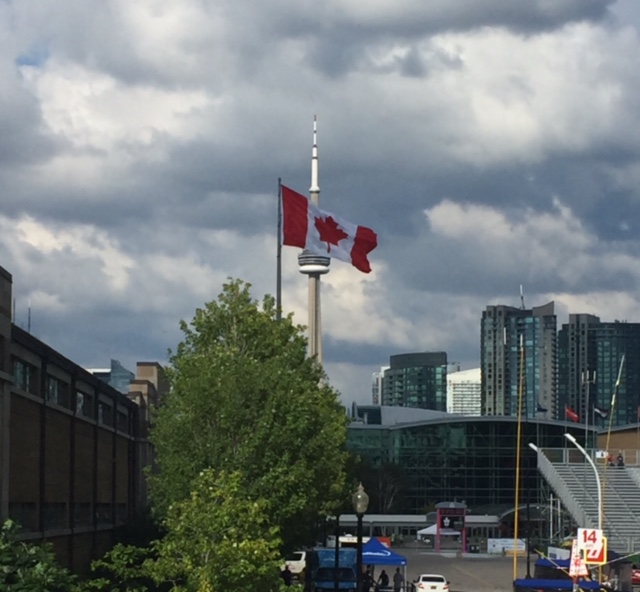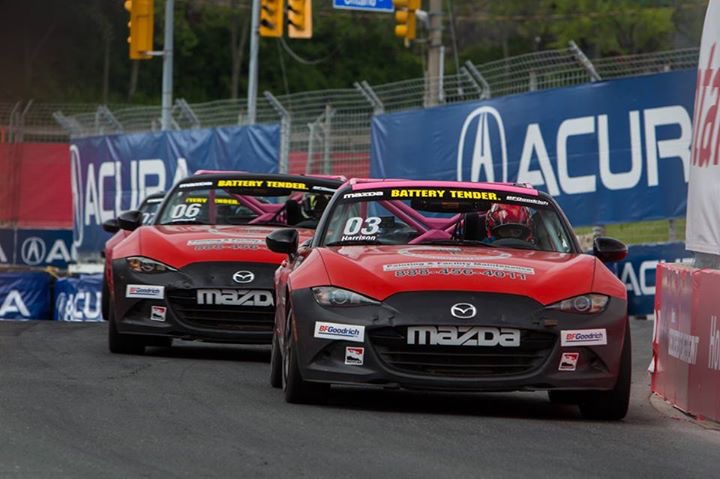I was at the Toronto Indy Grand Prix for the first time last weekend, coaching Ashton Harrison and Patrick Wilmot in the Mazda Global MX-5 Cup Series. Since I’d never been to that street circuit before, the big priorities were to understand the track layout and match the studying Ashton and Pat had done prior to the event with the actual circuit itself.

Trackwalk with the city skyline as backdrop.
After studying and track orientation comes the third step in the learning process: actually driving the track. There are a lot of nuances that are unique to a street circuit beyond the bumpy nature of the roads, and it was the first time both Ashton and Pat had ever been to a street circuit. The concrete walls present high consequences, and the grip level is ever-changing as the road is first cleaned off by racecars and then rubber is laid down.
MX-5 Cup was the first session on track Friday morning, so those cars acted like street sweepers. Even though the track was clean, there was road car oil and the typical conditions city roads present. By comparison, after racecars had been on the circuit for a few hours, the surface got scrubbed clean and then the tires laid down a layer of rubber.
Ashton and Pat embraced and enjoyed the opportunity to race on a street circuit, but they also realized there was a lot to learn, including getting used to the car moving around so much because of the surface transitions from concrete to asphalt, painted lines, and other factors that change grip levels. In addition, getting comfortable utilizing every inch of the road is difficult when it’s not exit curbing but a concrete wall that greets you!

The tricky Turn11 onto the front straight.
Through a busy first day of two practice sessions and qualifying, coming up to speed was the name of the game. Obviously, having the proper setup is really critical, but it was hard to focus on the car handling while also adapting to the track. By the end of the weekend, both Pat and Ashton found the subtleties needed in the setup as they got more comfortable with the circuit.
During the first race Pat had a great run going, just outside the top five, but an unfortunate brush with the wall messed up the alignment and ended his day. Meanwhile, Ashton was able to hold on for a close finish that saw her just outside the top 10.
For race two, there was a lot of excitement with cars going every which way at the start. Ashton and Pat were able to avoid all of the mayhem. They met their goals of finishing inside the top ten, but the results didn’t really showcase their potential.
We all have those weekends, where we don’t get the maximum potential out of our cars or ourselves, and it’s important to understand and identify what exactly you can do better in the future. That applies to both yourself as a driver and what the car would need to give you a better result. It’s something you can build on and learn from, whether it’s for the next event or your next visit to that circuit. The only way to get better as an individual and as a team is to identify opportunities for improvement.

A view of the CN Tower from the Turn 8-9 complex.



